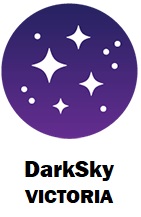WHY THE DOMAIN NEEDS A LIGHTING PLAN
ARTIFICIAL SKYGLOW
Upward used and unused waste light from existing lighting in the Domain helps blot out natural features of the night sky, degrading its natural beauty and suppressing Aboriginal Dreaming culture. It makes faint celestial objects invisible to telescopic observation from Melbourne Observatory, counter to the encouragement of science, technology, engineering and mathematics (STEM).
EXCESSIVELY BRIGHT LIGHTS
Especially in older people, glare from the existing Domain lighting causes discomfort and increases the difficulty of seeing detail in shaded areas and in telescopic views.
CRIME
Lighting certainly decreases the fear of crime, but there is no reliable scientific evidence that lighting reduces actual crime. Instead, there is compelling evidence that lighting, seclusion and isolation encourage outdoor crime.
MOBILITY
It is possible to jog safely on a path in the light of a full moon, about 0.2 lux. Natural darkness can be dangerous for pedestrians but all of the Domain is more or less lit by stray artificial light, depending on the amount of cloud. Supplemental lighting along paths assists safe movement but the Domain’s existing path lights are too bright, too glary and emit waste light directly into the sky, adding to the already excessive artificial skyglow.
CURFEWS
Dozens of UK municipalities that have introduced partial or complete street lighting curfews after 11 pm or later as economy and greenhouse gas measures almost universally report no increase in crime and no increase in traffic accidents. The existing 11 pm curfew on the Tan Track should be extended to the whole Domain including street lighting and Shrine, Government House and Music Bowl floodlighting.
ADVERSE EFFECTS OF ARTIFICIAL LIGHT ON WILDLIFE AND PLANTS
Life on Earth evolved in the presence of the day-night light cycle. Interfering with darkness at night is helpful to some species and inimical to many others. The net ecological effect is reduced biodiversity, hardly what the Domain needs.
ADVERSE EFFECTS OF ARTIFICIAL LIGHT ON HUMAN HEALTH
Humans are remarkably adaptable to environmental changes but that does not confer immunity, as is evidenced by the disasters wrought by exposures to tobacco smoke, asbestos dust, heavy metals and ionising radiation. Artificial light at night, especially its blue component, is shaping up as even more dangerous. It is a risk factor for ‘social jetlag’, depression, obesity, breast and prostate cancer, type 2 diabetes, heart disease and dementia. At night, blue-rich outdoor lighting is as much a hazard as blue-rich indoor lighting and the displays on electronic screens. Dim blue-poor (eg amber) lighting with a curfew is the healthier alternative.
Contact: B. A. Clark, Victorian Chapter, International Dark Sky Association
